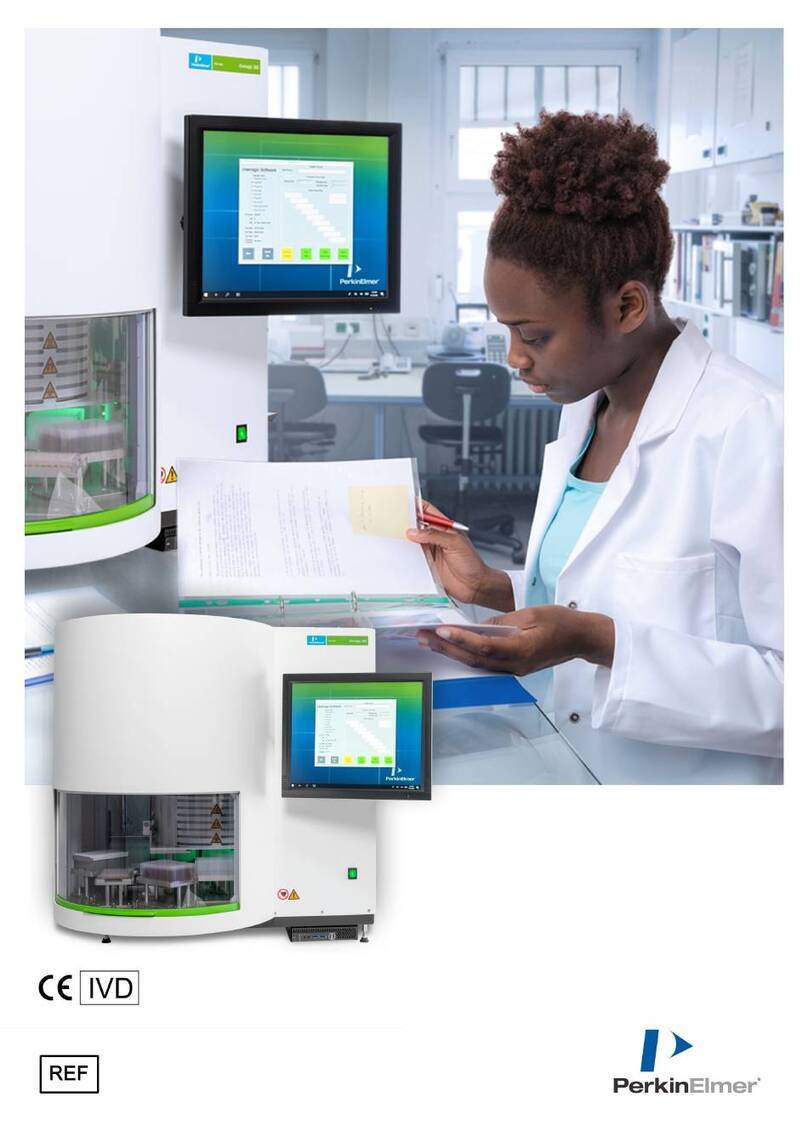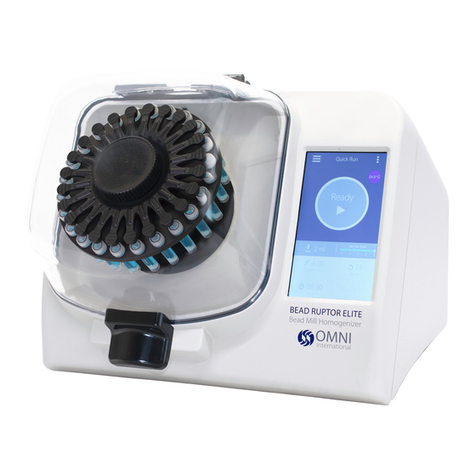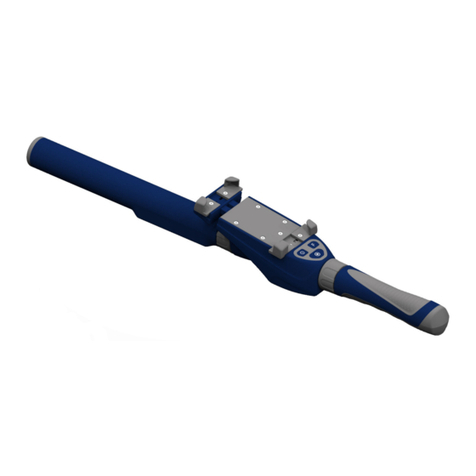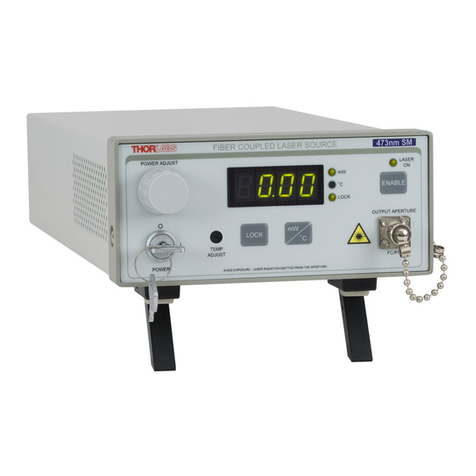Thermo Finnigan LCQ Deca XP Plus User manual

LCQ
Deca XP Plus
Hardware Manual
Revision A
97344-97003
TM

Technical information contained in this publication is for reference purposes only and is subject to change without
notice. Every effort has been made to supply complete and accurate information; however, Thermo Finnigan
assumes no responsibility and will not be liable for any errors, omissions, damage, or loss that might result from
any use of this manual or the information contained therein (even if this information is properly followed and
problems still arise).
This publication is not part of the Agreement of Sale between Thermo Finnigan and the purchaser of an LC/MS
system. In the event of any conflict between the provisions of this document and those contained in
Thermo Finnigan’s Terms and Conditions, the provisions of the Terms and Conditions shall govern.
System Configurations and Specifications supersede all previous information and are subject to change without
notice.
Printing History: Revision A printed in March 2002
The products of the Thermo Finnigan LC and LC/MS Division are produced under ISO 9001 accredited quality management systems.
Australia: Thermo Finnigan •P.O. Box 239 Rydalmere•Unit 14, Metro Centre •38 – 46 South Street •Rydalmere, N.S.W. 2116 •[61] (02) 9898-9000
Austria: ThermoQuest GmbH •Wehlistrasse 27b •A-1200 Wien •[43] (01) 333 50 34-0
Belgium: Thermo Finnigan BVBA •Groenenborgerlaan 84 •B-2610 Wilrijk (Antwerpen) •[32] (03) 825 06 70
Canada: Thermo Finnigan Canada •5716 Coopers Avenue, Unit 1 •Mississauga, Ontario •L4Z 2E8 •[1] (905) 712-2258
France: Thermo Finnigan France SA •Parc Hightec Sud •12 avenue des Tropiques •Z.A. de Courtaboeuf BP141 •F-91944 Les Ulis Cédex •
[33] (01) 69 18 88 10
Germany: Thermo Finnigan Analytische Systeme GmbH •Boschring 12 •D-63329 Egelsbach •[49] (06103) 408 0
Italy: Thermo Finnigan Italia S.p.A. •Strada Rivoltana •I-20090 Rodano (Milano) •[39] (02) 95 059 1
Japan: ThermoQuest K.K. •Nishi-Shinjuku Toyokuni Building, 3rd Floor •2-5-8 Hatsudai, Shibuya-ku •Tokyo 151-0061 •[81] (03) 3372-3001
Japan: ThermoQuest K.K. •Esaka Grand Building •2-3-1 Esaka-cho, Suita City •Osaka 564-0063 •[81] (06) 6387-6681
Netherlands: Thermo Finnigan BV •Druivenstraat 33 •NL – 4816 KB Breda •[31] (076) 587 8722
P.R. China: Thermo Finnigan China •Room 912-916, Ping-an Mansion •No. 23, Jin Rong Street •Xi Cheng District •Beijing 100032 •
[86] (010) 6621 0839
Spain: ThermoQuest SA •Avenida de Valdelaparra 27 •Edificio Alcor – Planta 2a •ES-28108 Alcobendas (Madrid) •[34] (091) 657 4930
Spain: ThermoQuest SA •Acer 30 – 32 •Edificio Sertram – Planta 2, Modulo 3 •ES-08038 Barcelona •[34] (093) 223 0918
Sweden: Thermo Finnigan AB •Pyramidbacken 3 •S-141 75 Kungens Kurva (Stockholm) •[46] (08) 680 01 01
United Kingdom: Thermo Finnigan Ltd. •Paradise •Hemel Hempstead •Herts HP2 4TG •[44] (01442) 233 555
U.S.A.: Thermo Finnigan LC and LC/MS Division •355 River Oaks Parkway •San Jose, CA 95134-1991 •[1] (408) 965-6000
Notes: The country code is enclosed in square brackets [ ]. The city code or area code is enclosed in parenthesis ( ). For countries other than the U.S.A., when
you are dialing from within the specified country, dial the 0 of the city code. For countries other than Italy, when you are dialing from outside the country, do not dial
the 0 of the city code.
Published by Technical Publications, Thermo Finnigan, LC and LC/MS Division, San Jose, California.
Copyright©2002 Thermo Finnigan, a Thermo Electron business. All rights reserved. Printed in the United States of America.
LCQ™ and ZoomScan™ are trademarks of Thermo Finnigan. Convectron®is a registered trademark of Granville-Phillips Company.
Gastight®is a registered trademark of Hamilton Company. Gateway 2000®is a registered trademark of Gateway 2000 Inc. Hewlett-
Packard®is a registered trademark of Hewlett-Packard Company. Agilent®is a registered trademark of Agilent Technologies, Inc. Intel®
and Punting®are registered trademarks of Intel Corporation. KEL-F®is a registered trademark of 3M Corporation. Kimwipe®is a
registered trademark of Kimberly-Clark Corporation. Microsoft®and Windows NT®are registered trademarks of Microsoft Corporation.
Swagelok®is a registered trademark of Crawford Fitting Company. Delrin®, Kalrez®, Teflon®, Tefzel®, Vespel®, and Viton®are registered
trademarks of E.I. du Pont de Memours & Co. Tygon®is a registered trademark of Norton Industrial Plastics.

Customer Registration... Register now and receive all the privileges associated with being a Thermo Finnigan
product user including application reports and technical reports.
Name_______________________________________________________________________________________
Title________________________________________________________________________________________
Company ___________________________________________________________________________________
Address_____________________________________________________________________________________
City/State/Postal Code ________________________________________________________________________
Country ____________________________________________________________________________________
Telephone ____________________________________________________ Ext.___________________________
LCQ Deca XP Plus Serial # ____________________________ DatePurchased__________________________
Tell us more... Please let us know more about how you use this product:
Reader Survey... Please help us to improve the quality of our documentation by answering a few questions:
If you would like to make additional comments, please do. (Attach additional sheets if necessary.)
____________________________________________________________________________________________
____________________________________________________________________________________________
____________________________________________________________________________________________
Please tear this sheet from the manual, fold it closed, stamp it, and drop it in the mail.
MY ORGANIZATION IS:(Check one only) MY PRIMARY APPLICATION IS: (Check one only)
Commercial (for profit) lab Analytical
Government lab Biomedical
Hospital / Clinic Clinical / Toxicology
Research Institute Energy
University / College Food / Agriculture
Veterinary Forensic / Toxicology
Other Pharmaceutical
Research / Education
JOB FUNCTION: (Check one only) Other
Administration
Lab Management
Operator
Other
LCQ Deca XP Plus Hardware Manual Revision A P/N 97344-97003
Strongly
Agree Agree Disagree Strongly
Disagree
The manual is well organized. 1 2 3 4
The manual is clearly written. 1 2 3 4
The manual contains all of the information I need. 1 2 3 4
The instructions are easy to follow. 1 2 3 4
The instructions are complete. 1 2 3 4
The technical information is easy to understand. 1 2 3 4
The figures are helpful. 1 2 3 4
I was able to operate the system by using this manual.
(If not, please comment below.) 1234

fold
From
EDITOR, TECHNICAL PUBLICATIONS
THERMO FINNIGAN, LC AND LC/MS DIVISION
355 RIVER OAKS PARKWAY
SAN JOSE, CA 95134-1991
UNITED STATES OF AMERICA
Place
Stamp
Here
fold

Regulatory Compliance
Thermo Finnigan performs complete testing and evaluation of its products to ensure full compli-
ance with applicable domestic and international regulations. When your system is delivered to
you, it meets all pertinent electromagnetic compatibility (EMC) and safety standards as follows:
EMC issues have been evaluated by EMC TECHNOLOGY SERVICES, A Subsidiary of
UNDERWRITERS LABORATORY, INC (UL)
Safety Compliance
Low Voltage Directive EN 61010-1 1993/A2
Please be aware that any changes that you make to your system may void compliance with one or
more of these EMC and/or safety standards.
Making changes to your system includes replacing a part. Thus, to ensure continued compliance
with EMC and safety standards, replacement parts should be ordered from Thermo Finnigan or
one of its authorized representatives.
FCC Compliance Statement
Note: This equipment has been tested and found to comply with the limits for a Class A digital
device, pursuant to part 15 of the FCC rules. These limits are designed to provide reasonable pro-
tection against harmful interference when the equipment is operated in a commercial environ-
ment. This equipment generates, uses, and can radiate radio frequency energy. If it is not installed
and used in accordance with the instruction manual, it may cause harmful interference to radio
communications. Operation of this equipment in a residential area is likely to cause harmful inter-
ference. In this case, the user will be required to correct the interference at his/her own expense.
EMC Certification
EN 55011 (1991)
EN 50082-1 (1992)
EN 61000-4-2 (1995)
EN 61000-4-3 (1996)
ENV 50204 (1995)
EN 61000-4-4 (1995)
EN 61000-4-5 (1995)
FCC Class A

Notice on Lifting and Handling of Thermo Finnigan LC and LC/MS
Division Instruments
For your safety, and in compliance with international regulations, the physical handling of this
Thermo Finnigan instrument requires a team effort for lifting and/or moving the instrument.
This instrument is too heavy and/or bulky for one person alone to handle safely.
Notice on the Proper Use of Thermo Finnigan LC and LC/MS
Division Instruments
In compliance with international regulations: If this instrument is used in a manner not speci-
fied by Thermo Finnigan, the protection provided by the instrument could be impaired.
97033/97133/97044/97144/70111
TF SJ - 1 March 2001

Contents
__________________________________________________________________________
__________________LCQ Deca XP Plus Hardware Manual _____________________ i
Contents
Read This First ..............................................................................................................................v
Changes to the Manual and Online Help ............................................................................................... vi
Abbreviations ........................................................................................................................................vii
Typographical Conventions ................................................................................................................... xi
Data Input ................................................................................................................ xi
Notes, Cautions, and CAUTIONS.......................................................................... xii
Topic Headings...................................................................................................... xiii
Safety Precautions ................................................................................................................................ xiv
Solvent and Gas Purity Requirements .................................................................................................. xvi
Service Philosophy ..............................................................................................................................xvii
Level of Repair ....................................................................................................................................xvii
Reply Cards ........................................................................................................................................xviii
Functional Description .............................................................................................................1-1
1.1 API Source................................................................................................................................ 1-2
API Probe Related Components......................................................................................... 1-2
API Stack.......................................................................................................................... 1-14
1.2 Ion Optics................................................................................................................................ 1-17
1.3 Mass Analyzer......................................................................................................................... 1-19
1.4 Ion Detection System.............................................................................................................. 1-20
Changing API Probe Assemblies .............................................................................................2-1
2.1 Removing the APCI Probe Assembly....................................................................................... 2-2
2.2 Installing the ESI Probe Assembly ........................................................................................... 2-5
2.3 Removing the ESI Probe Assembly.......................................................................................... 2-7
2.4 Installing the APCI Probe Assembly........................................................................................ 2-8

Contents
___________________________________________________________________________
ii_______________________LCQ Deca XP Plus Hardware Manual ________________
System Shutdown, Startup, and Reset .................................................................................... 3-1
3.1 Shutting Down the System in an Emergency........................................................................... 3-2
3.2 Placing the System in Standby Condition ................................................................................ 3-3
3.3 Shutting Down the System Completely.................................................................................... 3-4
3.4 Starting Up the System after a Complete Shutdown................................................................ 3-6
Starting Up the MS Detector.............................................................................................. 3-6
Setting Up Conditions for Operation................................................................................. 3-7
3.5 Resetting the MS Detector........................................................................................................ 3-8
3.6 Resetting the Tune and Calibration Parameters to their Default Values .................................. 3-9
3.7 Turning Off Selected MS Detector Components.................................................................... 3-10
User Maintenance ..................................................................................................................... 4-1
4.1 Tools and Supplies.................................................................................................................... 4-3
4.2 Frequency of Cleaning.............................................................................................................. 4-5
4.3 API Source Maintenance.......................................................................................................... 4-6
Flushing the Sample Transfer Line, Sample Tube, and API Probe ................................... 4-6
Flushing the Spray Shield, Ion Sweep Cone, Spray Cone, and Ion Transfer Capillary..... 4-8
Clearing the Bore of the Ion Transfer Capillary .............................................................. 4-10
Maintaining the APCI Probe............................................................................................. 4-11
Maintaining the ESI Probe............................................................................................... 4-18
Maintaining the API Stack............................................................................................... 4-27

Contents
__________________________________________________________________________
__________________LCQ Deca XP Plus Hardware Manual ____________________ iii
Service Maintenance .................................................................................................................5-1
5.1 Tools and Supplies.................................................................................................................... 5-3
5.2 Frequency of Cleaning.............................................................................................................. 5-4
5.3 Cleaning the Ion Optics and Mass Analyzer............................................................................. 5-5
Shutting Down the System................................................................................................. 5-5
Removing the Top Cover of the MS Detector.................................................................... 5-6
Removing the Top Cover Plate of the Vacuum Manifold .................................................. 5-6
Removing the Ion Optics and Mass Analyzer.................................................................... 5-7
Disassembling the Ion Optics and Mass Analyzer............................................................. 5-9
Cleaning the Ion Optics and Mass Analyzer Parts........................................................... 5-10
Reassembling the Ion Optics and Mass Analyzer............................................................ 5-11
Cleaning the Ion Detection System.................................................................................. 5-15
Reinstalling the Top Cover Plate of the Vacuum Manifold.............................................. 5-15
Reinstalling the Top Cover of the MS Detector............................................................... 5-16
Starting Up the System..................................................................................................... 5-16
Tuning the Ring Electrode and Quadrupole/Octapole RF Voltages................................. 5-16
5.4 Replacing the Electron Multiplier........................................................................................... 5-23
5.5 Diagnostics.............................................................................................................................. 5-28
5.6 Replacing a Fuse..................................................................................................................... 5-31
5.7 Replacing PCBs and Assemblies............................................................................................ 5-36
5.8 Replacing PCBs and Assemblies in the Tower....................................................................... 5-37
Replacing PCBs in the Embedded Computer................................................................... 5-42
Replacing the Vent Delay PCB and Backup Battery, Ion Gauge, and Vent Valve........... 5-45
Replacing the Electron Multiplier and Conversion Dynode Power Supplies,
Analyzer PCB, Analyzer Auxiliary PCB, Waveform Amplifier PCB, RF Voltage
Amplifier PCB........................................................................................................... 5-48
Replacing the System Control PCB ................................................................................. 5-53
5.9 Replacing the RF Voltage Control PCB.................................................................................. 5-57
Replacing the Low Pass Filter PCB ................................................................................. 5-59
5.10 Replacing the Turbomolecular Pump...................................................................................... 5-62
Removing the Turbomolecular Pump............................................................................... 5-62
Reinstalling the Turbomolecular Pump............................................................................ 5-64
5.11 Purging the Oil in the Rotary-Vane Pump .............................................................................. 5-65

Contents
___________________________________________________________________________
iv ______________________LCQ Deca XP Plus Hardware Manual ________________
Replaceable Parts ......................................................................................................................6-1
6.1 MS Detector.............................................................................................................................. 6-2
ESI Probe Assembly .......................................................................................................... 6-2
APCI Probe Assembly....................................................................................................... 6-4
API Probe Guide................................................................................................................ 6-5
API Stack ........................................................................................................................... 6-6
Ion Optics........................................................................................................................... 6-6
Mass Analyzer.................................................................................................................... 6-7
Ion Detection System
(Electron Multiplier / Conversion Dynode) ................................................................ 6-7
Top Cover Plate of Vacuum Manifold ............................................................................... 6-8
Divert/Inject Valve............................................................................................................. 6-8
Syringe Pump..................................................................................................................... 6-8
Turbomolecular Pump........................................................................................................ 6-9
Rotary-Vane Pumps............................................................................................................ 6-9
Vacuum System Assemblies .............................................................................................. 6-9
Mechanical Assemblies.................................................................................................... 6-10
Electrical Assemblies....................................................................................................... 6-10
Printed Circuit Boards (PCBs).......................................................................................... 6-11
RF Control / Detection Assemblies .................................................................................. 6-11
Cables............................................................................................................................... 6-12
Covers .............................................................................................................................. 6-13
6.2 Data System –Hardware........................................................................................................ 6-14
6.3 Chemicals Kit......................................................................................................................... 6-15
6.4 Accessory Kit ......................................................................................................................... 6-16
6.5 Recommended Spares............................................................................................................. 6-18
6.6 Divert / Inject Valve Accessories............................................................................................ 6-20
6.7 Optional Tools ........................................................................................................................ 6-21
Troubleshooting ........................................................................................................................ A-1

__________________LCQ Deca XP Plus Hardware Manual _____________________ v
Read This First
Welcome to the Thermo Finnigan LCQ™Deca XP Plus LC/MSnsystem!
This LCQ Deca XP Plus Hardware Manual contains a description of the
modes of operation and principal hardware components of your
LCQ Deca XP Plus system. In addition, this manual provides step-by-step
instructions for cleaning and maintaining your LCQ Deca XP Plus MS
detector.
The LCQ Deca XP Plus Hardware Manual includes the following chapters:
Chapter 1: Functional Description describes the principal components of
the LCQ Deca XP Plus MS detector.
Chapter 2: Changing ESI or APCI Probe Assemblies contains procedures
for changing ESI and APCI probes.
Chapter 3: System Shutdown, Startup, and Reset provides procedures for
shutting down and starting up the LCQ Deca XP Plus system.
Chapter 4: User Maintenance outlines the maintenance procedures that you
should perform on a regular basis to maintain optimum MS detector
performance.
Chapter 5: Service Maintenance outlines maintenance procedures for the
ion optics and electron multiplier and procedures for testing the major
electronic circuits within the instrument and for replacing failed PCBs and
assemblies.
Chapter 6: Replaceable Parts lists the replaceable parts for the MS detector
and data system.
Appendix A: Troubleshooting provides tables for troubleshooting and
diagnosing the LCQ Deca XP Plus.

Read This First
Changes to the Manual and Online Help __________________________________________
vi ______________________LCQ Deca XP Plus Hardware Manual ________________
Changes to the Manual and Online Help
To suggest changes to this manual or the online Help, please send your
comments to:
Editor, Technical Publications
Thermo Finnigan, LC and LC/MS Division
355 River Oaks Parkway
San Jose, CA 95134-1991
U.S.A.
You are encouraged to report errors or omissions in the text or index.
Thank you.

Read This First
_______________________________________________________________ Abbreviations
__________________LCQ Deca XP Plus Hardware Manual ____________________ vii
Abbreviations
The following abbreviations are used in this and other LCQ Advantage
manuals and in the online Help.
Aampere
ac alternating current
ADC analog-to-digital converter
AP acquisition processor
APCI atmospheric pressure chemical ionization
API atmospheric pressure ionization
ASCII American Standard Code for Information Interchange
bbit
B byte (8 b)
baud rate data transmission speed in events per second
°C degrees Celsius
CD compact disc
CD-ROM compact disc read-only memory
cfm cubic feet per minute
CI chemical ionization
CIP carriage and insurance paid to
cm centimeter
cm3cubic centimeter
CPU central processing unit (of a computer)
CRM consecutive reaction monitoring
<Ctrl> control key on the terminal keyboard
ddepth
Da dalton
DAC digital-to-analog converter
dc direct current
DDS direct digital synthesizer
DEPdirect exposure probe
DS data system
DSP digital signal processor

Read This First
Abbreviations _______________________________________________________________
viii _____________________LCQ Deca XP Plus Hardware Manual ________________
EI electron ionization
<Enter> enter key on the terminal keyboard
ESD electrostatic discharge
ESI electrospray ionization
eV electron volt
f femto (10-15)
°F degrees Fahrenheit
.fasta file extension of a SEQUEST search database file
FOB free on board
ft foot
FTP file transfer protocol
ggram
Ggiga(10
9)
GC gas chromatograph; gas chromatography
GC/MS gas chromatograph / mass spectrometer
GND electrical ground
GPIB general-purpose interface bus
GUI graphical user interface
hhour
hheight
HPLC high-performance liquid chromatograph
HV high voltage
Hz hertz (cycles per second)
ICISInteractive Chemical Information System
ICLInstrument Control Language
ID inside diameter
IEC International Electrotechnical Commission
IEEE Institute of Electrical and Electronics Engineers
in. inch
I/O input/output
kkilo(10
3, 1000)
Kkilo(2
10, 1024)
kg kilogram

Read This First
_______________________________________________________________ Abbreviations
__________________LCQ Deca XP Plus Hardware Manual ____________________ ix
llength
Lliter
LAN local area network
lb pound
LC liquid chromatograph; liquid chromatography
LC/MS liquid chromatograph / mass spectrometer
LED light-emitting diode
µmicro (10-6)
m meter
m milli (10-3)
Mmega(10
6)
M+ molecular ion
MH+ protonated molecular ion
min minute
mL milliliter
mm millimeter
MS mass spectrometer; mass spectrometry
MS MSnpower: where n = 1
MS/MS MSnpower: where n = 2
MSnMSnpower: where n = 1 through 10
m/z mass-to-charge ratio
n nano (10-9)
NCBI National Center for Biotechnology Information (USA)
NIST National Institute of Standards and Technology (USA)
Ωohm
OD outside diameter
ppico(10
-12)
Pa pascal
PCB printed circuit board
PID proportional / integral / differential
P/N part number
P/P peak-to-peak voltage
ppm parts per million

Read This First
Abbreviations _______________________________________________________________
x_______________________LCQ Deca XP Plus Hardware Manual ________________
psig pounds per square inch, gauge
RAM random access memory
RF radio frequency
RMS root mean square
ROM read-only memory
RS-232 industry standard for serial communications
s second
SIM selected ion monitoring
solids probe direct insertion probe
SRM selected reaction monitoring
SSQsingle stage quadrupole
TCP/IP transmission control protocol / Internet protocol
TIC total ion current
Torr torr
TSQtriple stage quadrupole
u atomic mass unit
URL uniform resource locator
Vvolt
V ac volts alternating current
V dc volts direct current
vol volume
wwidth
Wwatt
WWW World Wide Web
Note. Exponents are written as superscripts. In the corresponding online
Help, exponents are written with a caret (^) or with enotation because of
design constraints in the online Help. For example:
MSn(in this manual) MS^n (in the online Help)
105(in this manual) 10^5 (in the online Help)

Read This First
_____________________________________________________Typographical Conventions
__________________LCQ Deca XP Plus Hardware Manual ____________________ xi
Typographical Conventions
Typographical conventions have been established for Thermo Finnigan
LC and LC/MS Division manuals for the following:
•Data input
•Notes, Cautions, and CAUTIONS
•Topic headings
Data Input
Throughout this manual, the following conventions indicate data input and
output via the computer:
•Prompts and messages displayed on the screen are represented in this
manual by capitalizing the initial letter of each word and italicizing each
word.
•Input that is to be entered by keyboard or buttons that are to be clicked on
by the mouse is represented in bold face letters. (Titles of topics,
chapters, and manuals also appear in bold face letters.)
•For brevity, expressions such as “choose File | Directories”are used
rather than “pull down the File menu and choose Directories.”
•Any command enclosed in angle brackets < > represents a single
keystroke. For example, “press <F1>”means press the key labeled F1.
•Any command that requires pressing two or more keys simultaneously is
shown with a hyphen connecting the keys. For example, “press <Shift>-
<F1>” means depress and hold the <Shift> key and then press the <F1>
key.

Read This First
Typographical Conventions ____________________________________________________
xii______________________LCQ Deca XP Plus Hardware Manual ________________
Notes, Cautions, and CAUTIONS
Notes, Cautions, and CAUTIONS are displayed in boxes such as the one
below.
A Note contains information that can affect the quality of your data. In
addition, notes often contain information that you may need if you are having
trouble.
A Caution contains information necessary to protect your instrument from
damage.
A CAUTION describes hazards to human beings. Each CAUTION is
accompanied by a CAUTION symbol. Each hardware manual has a blue
CAUTION sheet that lists the CAUTION symbols and their meanings.
Note.
Boxes such as this are used to display Notes, Cautions, and CAUTIONS.

Read This First
_____________________________________________________Typographical Conventions
__________________LCQ Deca XP Plus Hardware Manual ___________________ xiii
Topic Headings
The following headings are used to show the organization of topics within a
chapter:
Chapter 1
Chapter Name
1.2 Second Level Topics
Third Level Topics
Fourth Level Topics
Fifth Level Topics

Read This First
Safety Precautions___________________________________________________________
xiv_____________________LCQ Deca XP Plus Hardware Manual ________________
Safety Precautions
Observe the following safety precautions when you operate or perform
service on the MS detector.
Do Not Perform Any Servicing Other Than That Contained in the
LCQ Deca XP Plus Hardware Manual.
To avoid personal injury or damage to the instrument, do not perform any
servicing other than that contained in the LCQ Deca XP Plus Hardware
Manual or related manuals unless you are qualified to do so.
Shut Down the MS Detector and Disconnect It From Line Power Before
You Service It.
High voltages capable of causing personal injury are used in the instrument.
Some maintenance procedures require that the MS detector be shut down and
disconnected from line power before service is performed. Do not operate the
MS detector with the top or side covers off. Do not remove protective covers
from PCBs.
Respect Heated Zones.
Treat heated zones with respect. The ion transfer capillary and the APCI
vaporizer may be very hot and may cause severe burns if they are touched.
Allow heated components to cool before you service them.
Place the MS Detector in Standby (or Off) Before You Open the
Atmospheric Pressure Ionization (API) Source.
The presence of atmospheric oxygen in the API source when the MS detector
is On could be unsafe. (LCQ Deca XP Plus automatically turns the MS
detector Off when you open the API source, however, it is best to take this
added precaution.)
Make Sure You Have Sufficient Nitrogen For Your API Source.
Before you begin normal operation each day, make sure that you have
sufficient nitrogen for your API source. The presence of atmospheric oxygen
in the API source when the MS detector is On could be unsafe. (LCQ Deca
XP Plus automatically turns the MS detector Off when you run out of
nitrogen, however, it is best to take this added precaution.)
Provide an Adequate Fume Exhaust System and Contain Waste Streams.
It is your responsibility to provide an adequate fume exhaust system. Samples
and solvents that are introduced into the LCQ Deca XP Plus will eventually
be exhausted from the rotary-vane pump. Therefore, the rotary-vane pump
should be connected to a fume exhaust system. Consult local regulations for
the proper method of exhausting the fumes from your system.
Table of contents
Popular Laboratory Equipment manuals by other brands
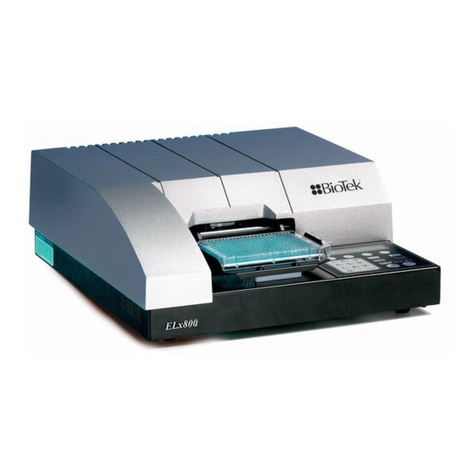
Bio-Tek
Bio-Tek ELx800 Operator's manual
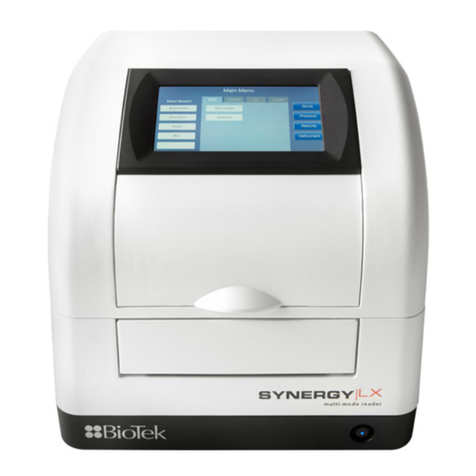
Bio-Tek
Bio-Tek Synergy LX user manual
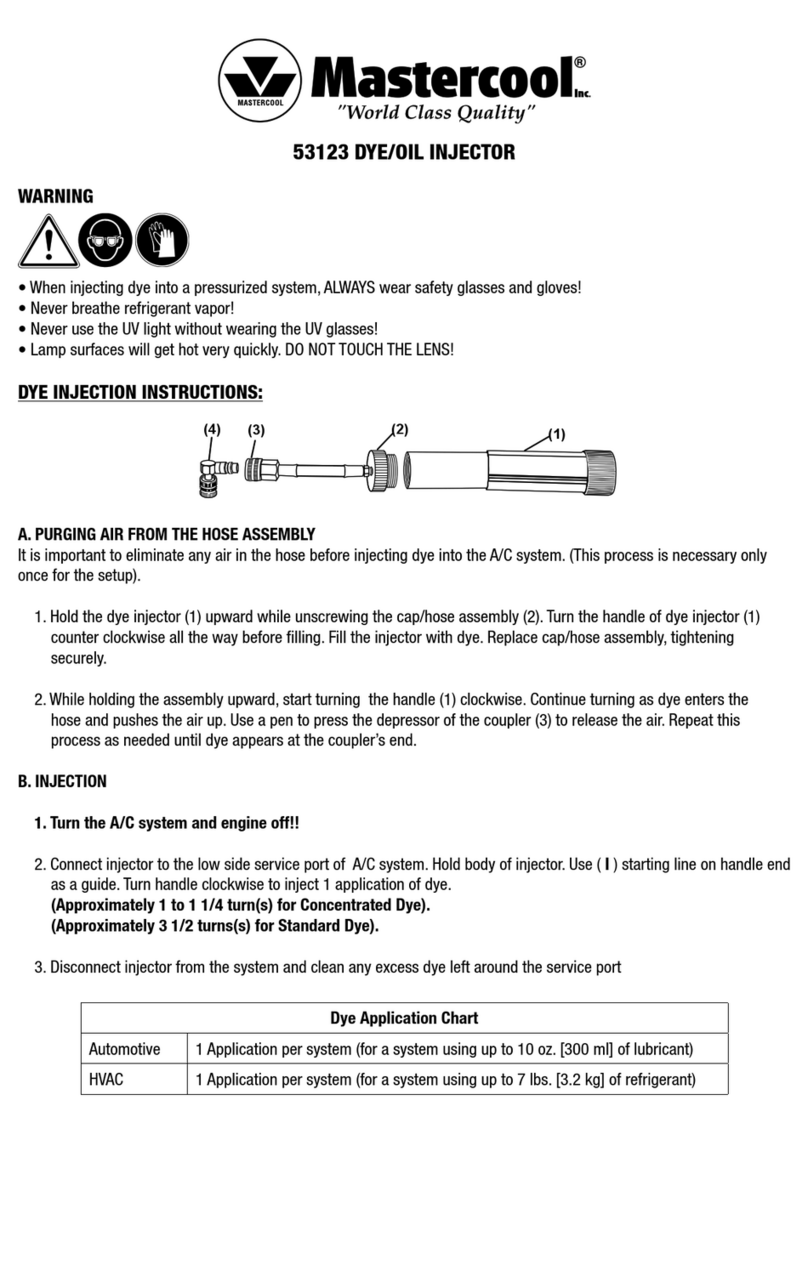
Master cool
Master cool 53123 quick start guide
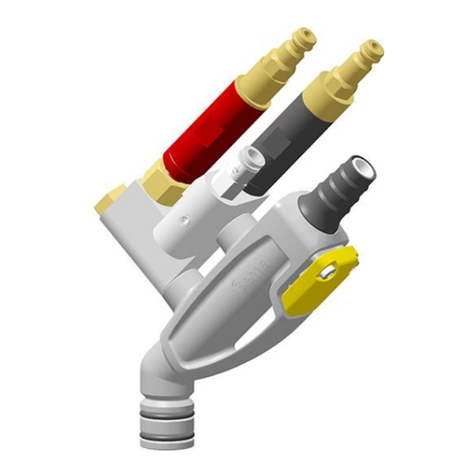
Gema
Gema OptiFlow IG07-PA Operating instructions and spare parts list
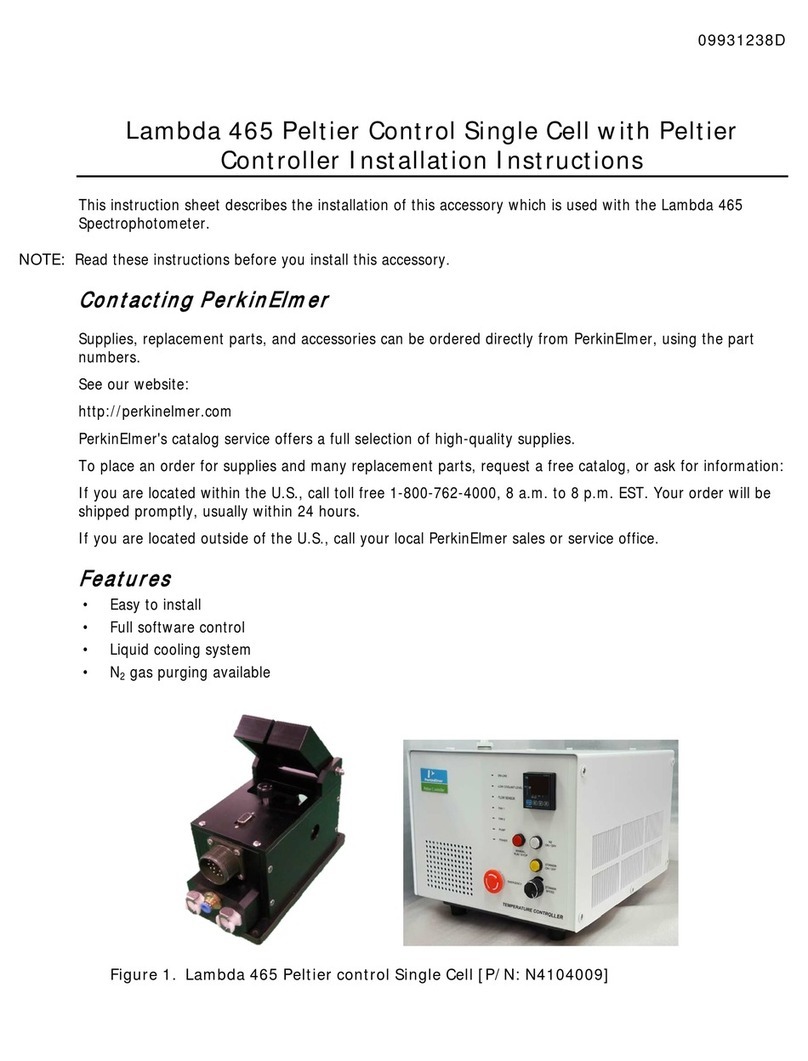
PerkinElmer
PerkinElmer Lambda 465 installation instructions

3D Histech
3D Histech TMA Grand Master 3.2 user guide
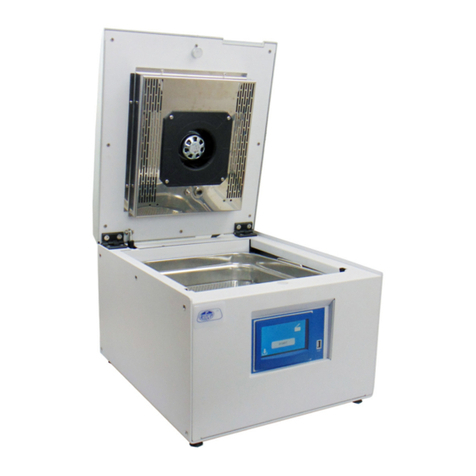
J.P. SELECTA
J.P. SELECTA HPC PL-3 manual
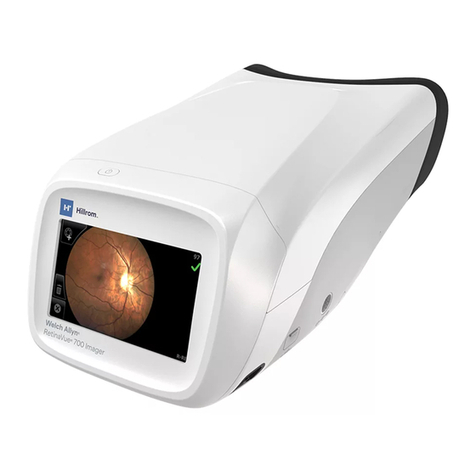
Hillrom
Hillrom Welch Allyn RetinaVue 700 Directions for use
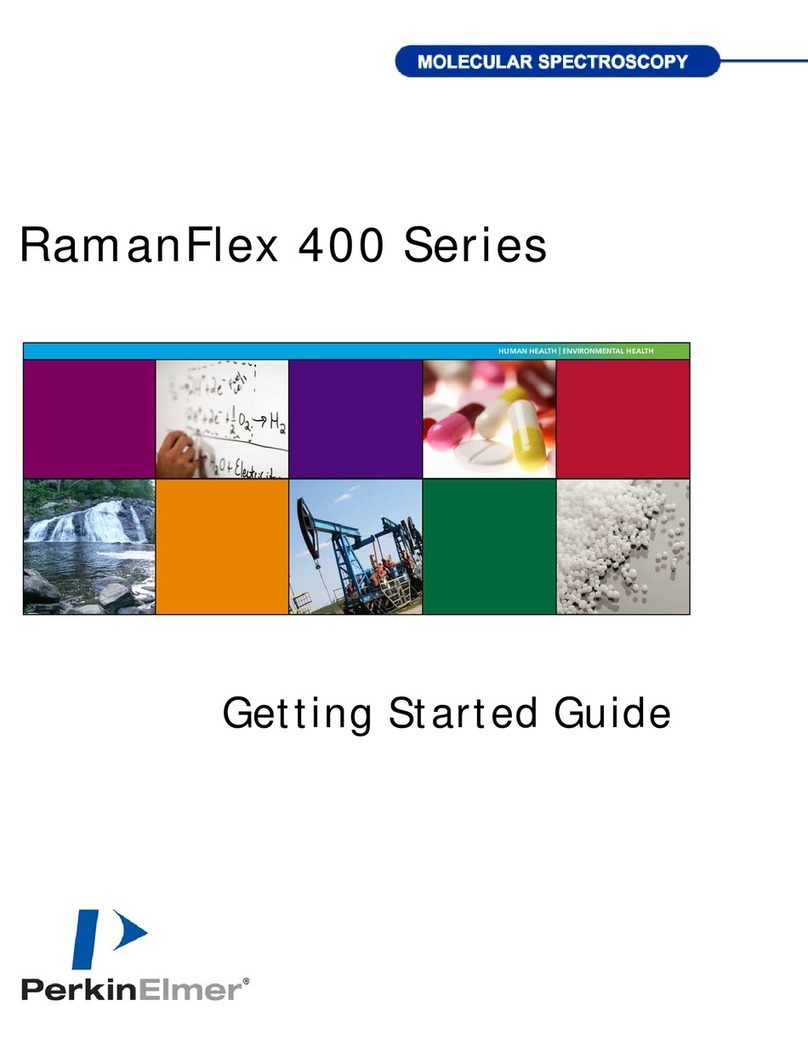
PerkinElmer
PerkinElmer Raman Flex 400 Series Getting started guide
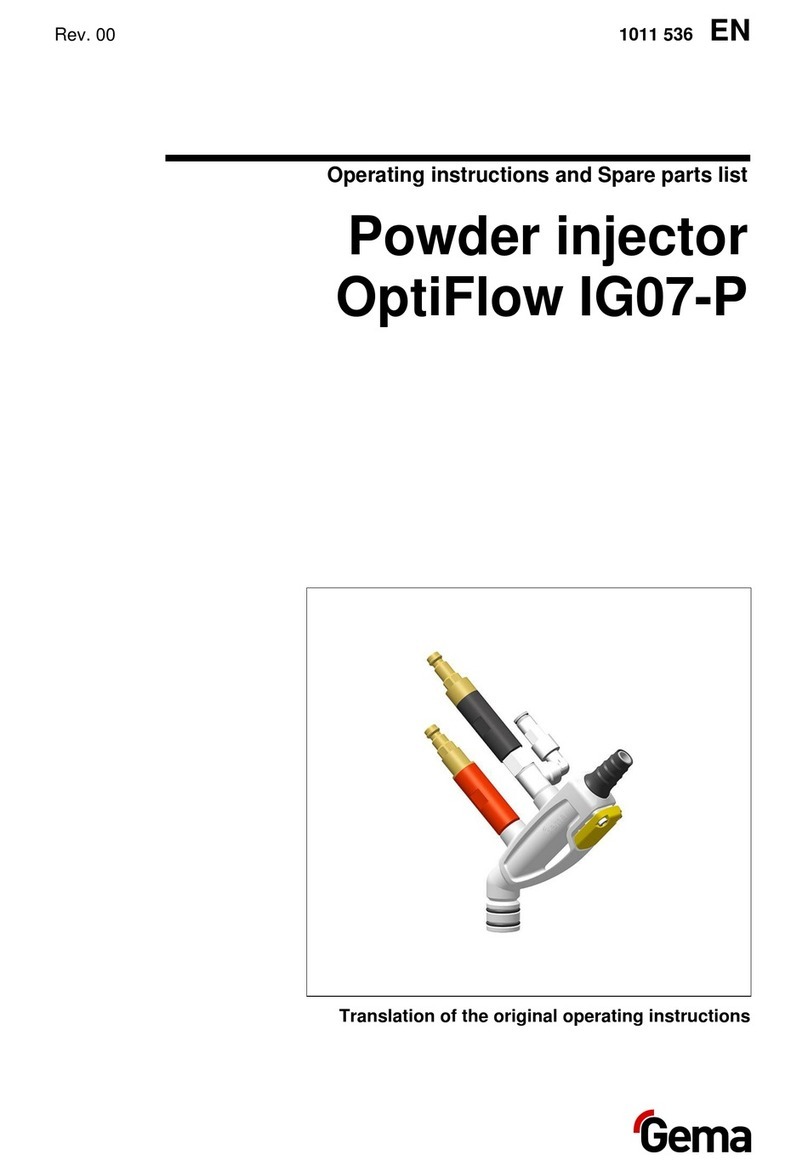
Gema
Gema OptiFlow IG07-P operating instructions
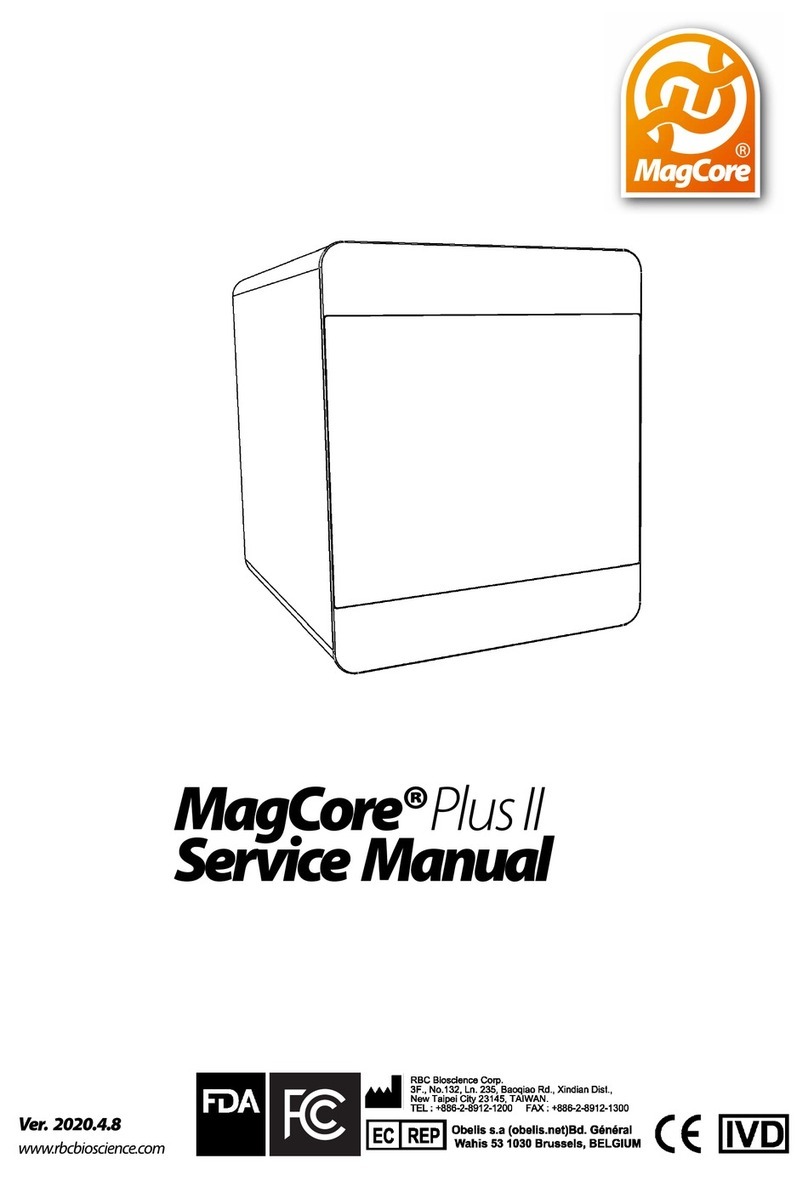
RBCBioscience
RBCBioscience MagCore Plus II Service manual
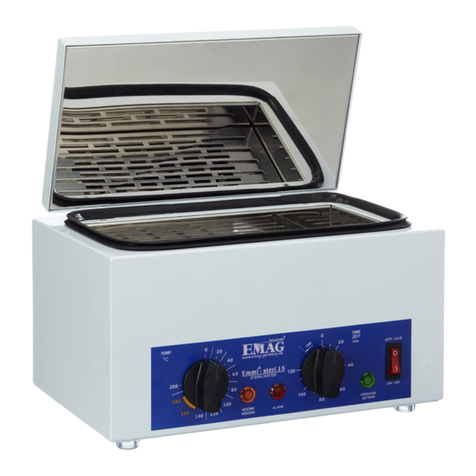
E-MAG
E-MAG Emmi steri 15 Operating instruction

